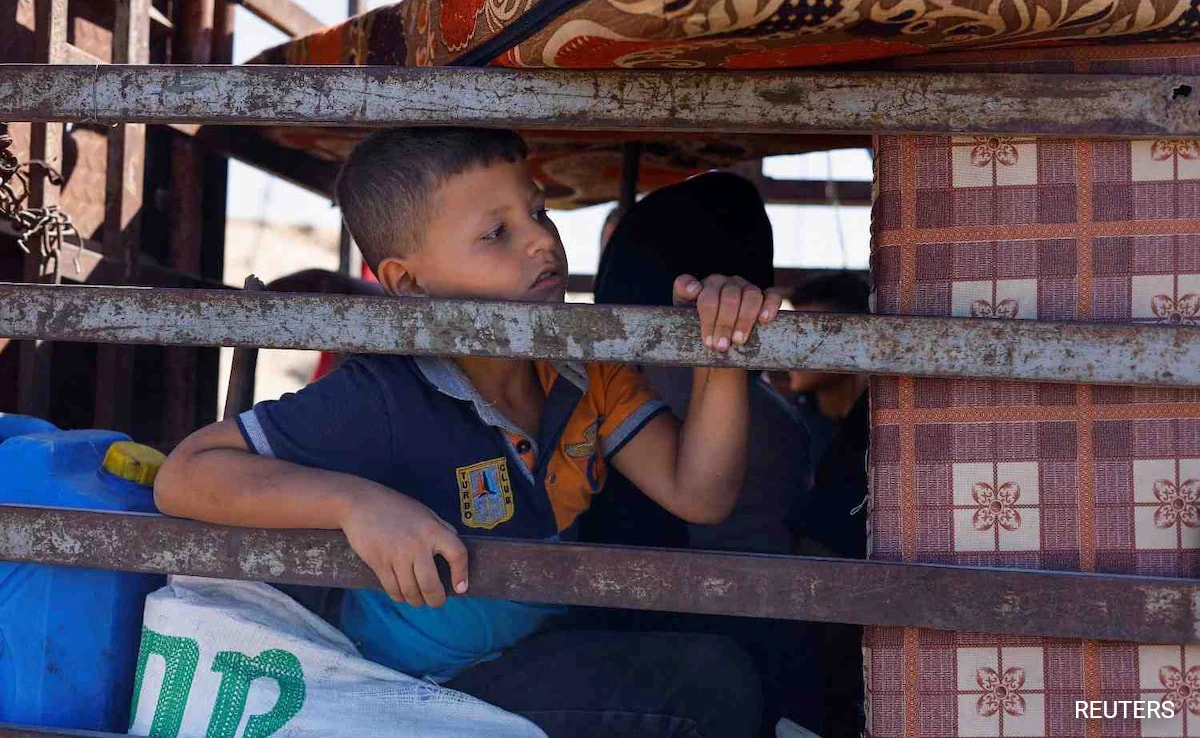Humanitarian parole provides newcomers with temporary work authorization but not a pathway to citizenship, unlike the formal U.S. refugee program, which carries more legal benefits and protections.
Biden raised to 125,000 the number of refugees the United States is willing to admit during the current fiscal year, but his administration is on pace to receive only 15,000 as a result of processing backlogs and what officials describe as pandemic-related limitations.
Bringing Ukrainians as humanitarian parolees or using other visa channels is likely to be quicker, but the White House did not provide a timetable for reaching the 100,000 goal.
Krish O’Mara Vignarajah, the president of the Lutheran Immigration and Refugee Service, praised the administration’s announcement as an example of “global humanitarian leadership.”
She urged Biden officials to quickly ramp up refugee processing and expedite family reunification visas that would allow Ukrainian Americans to bring over their relatives.
“We’ll need to see how the White House views the breakdown of these figures and what resources and personnel they’ll put towards achieving what we view not as ceiling but a target of 100,000," said Vignarajah, whose organization has resettled about 5,000 Ukrainians over the past decade, equal to roughly a quarter of all Ukrainians resettled in the United States during that time.
Biden — who is in Brussels Thursday and part of Friday for meetings with NATO, the Group of Seven, and European Union leaders— will also announce more than $1 billion in humanitarian assistance for those affected by the war, as well as more than $11 billion over the next five years to help with food security threats.
Administration officials said Thursday that while they expect many Ukrainians will choose to remain in Europe, some of those fleeing their country will want to enter the United States. White House officials have said that many of those who have left Ukraine may want to stay close to their home country because they hope to return.
The arrival of 100,000 Ukrainians would be one of the largest resettlement operations in U.S. history, but the figure amounts to a relatively small portion of the more than 3.6 million displaced by the Russian invasion so far, according to the latest United Nations estimates.
Those Ukrainian refugees have largely been welcomed into neighboring European countries, where the European Union has issued a directive allowing all Ukrainians to travel visa-free within the bloc as well as work, and receive access to public education, housing and health care for one year.
Refugees fleeing other conflicts, including Afghanistan, Syria and Yemen have, by comparison, found significant obstacles to accessing safe refuge in neighboring countries, and in Europe.
In recent weeks small number of Ukrainians have traveled to Mexico and attempted to enter the United States at ports of entry along the U.S. southern border. U.S. Customs and Border Protection has allowed them to enter on a “case-by-case” basis using humanitarian parole. Officials say the numbers remain relatively low, at a few dozen per day.
German Foreign Minister Annalena Baerbock on Monday called for the West to establish an “air bridge” to aid the escape of refugees.
Baerbock said she expects the upcoming effort to be the biggest relocation process since World War II. Despite the barrage of missiles and other artillery hammering every region of Ukraine, the established humanitarian corridors for Ukrainians to flee the country continue to function.
A U.S. official said the goal of U.S. and European officials is to distribute the refugees across the West — including across the Atlantic — to avoid overburdening any single country. The U.S. offer to take in 100,000 refugees evolved from a lower number earlier in the week, said another official.
Poland, with a population of 38 million, has taken in more than 2 million displaced Ukrainians. The population of the United States is nearly nine times larger.
In a fact sheet describing the initiative, the White House said it was “working to expand and develop new programs with a focus on welcoming Ukrainians who have family members in the United States.”
“The United States and the European Union are also coordinating closely to ensure that these efforts, and other forms of humanitarian admission or transfers, are complementary and provide much-needed support to Ukraine’s neighbors,” the document says.
Speaking to reporters aboard Air Force One en route to Brussels Wednesday, national security adviser Jake Sullivan said that the growing flood of refugees was one of the major topics on the agenda for Biden’s trip. He added that it was important “that we all work together to do our part on the humanitarian element of this crisis, both to suffering inside Ukraine and the refugee crisis outside Ukraine.”
“Here Europe has really stepped up in a huge way, and it’s the United States that will be coming with additional commitment on both humanitarian assistance and refugees tomorrow,” Sullivan said Wednesday.
The second part of Biden’s three-day trip, a stop in Poland, will also focus on refugees. Poland so far has faced the largest influx of fleeing Ukrainians, and on Friday Biden plans to hold an event in that country addressing the refugee crisis, including meeting with humanitarian assistance experts.
Ukrainians have been well-represented in U.S. refugee admissions for several years, even becoming the third largest source of refugees admitted to the United States under President Donald Trump — a trend that refugee advocates and experts attributed to a Cold War-era law that gives special preference to religious minorities (including Protestants) from the former Soviet Union, and Trump’s larger antipathy towards Muslim refugees and Muslim immigrants in general.
The U.S. admitted more than 1,900 Ukrainian refugees during Trump’s final year in office — about 16 percent of the total number of refugees admitted.
By contrast, critics say, the United States has admitted relatively few refugees from Afghanistan, Syria, Yemen and other war zones with far larger refugee crises. Even in the last fiscal year — as the Biden administration wound down the 20-year war in Afghanistan — and in the first quarter of 2022, the United States admitted more Ukrainian refugees (1,495) than it has Afghan refugees (1,005), according to data published by the State Department.
A far larger number of Afghans have immigrated to the United States overall in recent years, most of them with Special Immigrant Visas — those reserved for the Afghans who worked for the U.S. mission in Afghanistan.
The Biden administration also brought more than 76,000 Afghans to the United States following its chaotic exit from Afghanistan last summer, but refugee advocates have called for the government to do more. Tens of thousands of Afghans with connections to the U.S. were left behind, advocates say, and the vast majority of the evacuees to the U.S. were given only temporary protective status, as humanitarian parolees.
John Hudson in Washington contributed to this report.
.png)











 English (United States) ·
English (United States) ·  Turkish (Turkey) ·
Turkish (Turkey) ·